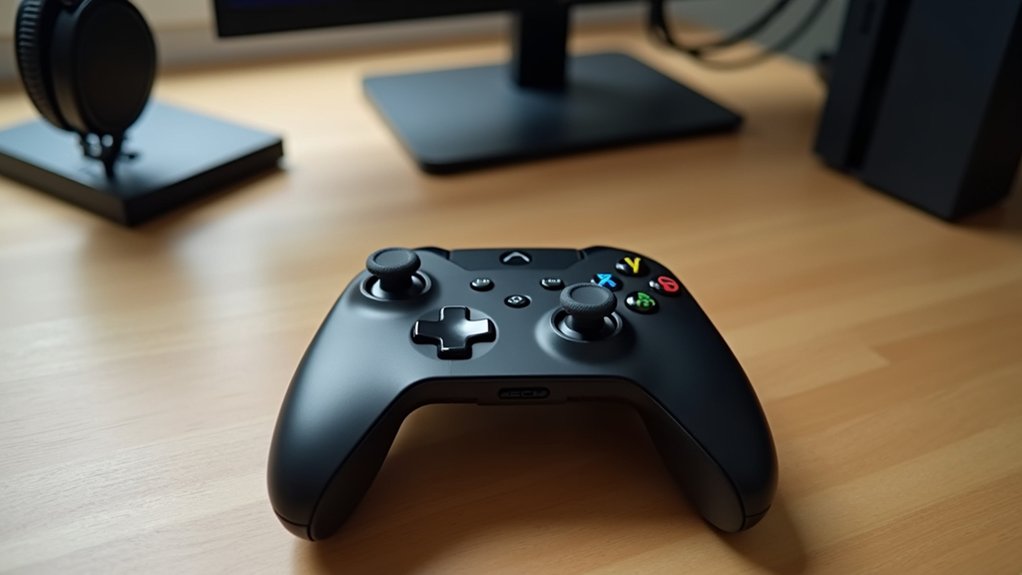
How to solve Lucas’s party room puzzle in Resident Evil 7
Overcome Lucas's Party Room puzzle in Resident Evil 7 quickly by mastering the hidden clues and timing—discover the secret to beating it fast!


A beginner controller layout should focus on simple, reliable controls. The left stick handles movement, while the right stick controls the camera so you can aim and look around smoothly. Place core actions like jump, shoot, reload, sprint, and interact on the most accessible buttons to reduce finger travel. This beginner controller layout also benefits from tuning sensitivity, dead zones, and vibration to cut fatigue and boost precision in long sessions.

For different genres, create profiles that match your playstyle—FPS, racing, action-adventure, and sports all benefit from specialized mappings. Practice with simple drills to build muscle memory: track targets with the right stick, strafe with the left stick, and combine jump or crouch with aim. With a few practical tweaks, a beginner controller layout can deliver consistent results—but don’t ignore settings like aim assist style, trigger thresholds, or inverted look, which often hold players back.
Picking the best controller for your platform starts with compatibility and native support. Console gamers usually get the smoothest experience with first-party controllers thanks to seamless updates, low-latency wireless performance, and full feature support.
On PC, look for a controller with strong driver compatibility, reliable Bluetooth or USB-C connectivity, and easy setup across popular games. Mobile gamers should check official OS-compatible gamepad lists, test latency, and confirm support in their favorite titles.
No matter your platform, consider comfort, build quality, battery life, and any history of stick drift before you buy.
If you play across multiple devices, choose a controller that follows widely supported standards for hassle-free switching. The right controller can level up your games by delivering consistent inputs, stable connections, and long-term reliability—making your controller choice just as important as the games you play.
When mapping buttons for core actions, start by assigning the most frequent, time-critical inputs to the most accessible controls. Put core actions like jump, shoot, interact, and reload on face buttons and primary triggers.
Keep movement on the left stick and camera control on the right stick to match industry standards and player expectations in games. Map sprint and crouch to easily held buttons for comfort during long sessions.
Reserve shoulder buttons for secondary functions like grenades or abilities. Finally, create a consistent layout across games to build muscle memory and reduce learning time.
Smart mapping buttons for core actions improves responsiveness, while consistent mapping buttons for core actions enhances performance for every player.
Adjusting sensitivity, dead zones, and vibration can transform your controller setup for better gaming performance.
Start by fine-tuning sensitivity to control how quickly your sticks translate movement—begin at a moderate level, then tweak to reduce over-aiming and improve precision in fast-paced games.
Next, set dead zones just high enough to stop stick drift without losing responsiveness; this keeps your aim and movement tight in shooters and racing games.
Finally, customize vibration to deliver clear feedback without causing distraction or fatigue—lower the intensity or disable it if it throws off your focus during long sessions.
Make small adjustments, test in real matches, and track what feels best. By dialing in sensitivity, dead zones, and vibration, you’ll get a consistent edge across all your favorite games.
Creating custom profiles for different game genres can transform how you play games and boost your performance.
For shooters, map sprint, crouch, and reload to easy-to-reach buttons, enable bumper-jump or paddle-jump if available, and choose linear response curves for precise aim—perfect for competitive games.
For racers, prioritize analog triggers for throttle and brake control, use gradual steering curves for smooth cornering, and turn on rumble cues to feel the track—ideal for racing games.
For action-RPGs, set up radial menus for quick item access, use lock-on toggles for targeting, and maintain consistent camera control across titles to keep your games feeling intuitive.
Practice drills to build muscle memory and accuracy are the fastest way to level up your controller skills. Run short, repeatable routines that isolate core actions: aiming, tracking, recoil control, and movement.
Start with flick shots on static targets, then switch to smooth tracking on strafing bots. Practice drills to build muscle memory and accuracy also include burst-firing to map recoil lines on walls.
Add figure-eight strafes while keeping perfect crosshair placement. Keep sessions to 10–15 minutes, three times daily, and avoid changing sensitivity so results stay consistent.
Track metrics like time-to-target, hit percentage, and session-to-session consistency. Over time, these practice drills to build muscle memory and accuracy will translate directly into better in-game performance.
A beginner controller layout should make gaming feel natural from the start. By following a clear, intentional setup, you gain comfort, consistency, and control. Use standardized stick mapping, sensible button placement, and tuned sensitivity to create a reliable baseline for any game. Custom profiles can tailor responsiveness to each genre, while simple, repeatable drills reinforce accuracy and timing. With practice, your inputs become second nature, reducing hesitation and improving results. Remember, a beginner controller layout can evolve with your preferences, but the fundamentals remain: map logically, tune deliberately, and train regularly. Over time, that beginner controller layout builds muscle memory, turning effort into instinct and helping you play better across shooters, racers, and action games.

Overcome Lucas's Party Room puzzle in Resident Evil 7 quickly by mastering the hidden clues and timing—discover the secret to beating it fast!

In Resident Evil 7, identifying crucial clues and mastering key usage unlocks the morgue's secrets—discover how to advance beyond this chilling challenge.

Knowing how to upgrade weapons in Resident Evil 4 can change your gameplay drastically—discover the secrets behind the Merchant's offers and unlock true power.

Perfect your Silent Hill 2 Remake journey by uncovering every alternative ending—each choice shapes the story in surprising ways you won't want to miss.

Just jump into God of War 2018 with these insider tips to get the Magic Crystal fast and discover secrets that speed up your quest.

Conquer the Fire Boss in Dark Souls with precise steps and strategies—discover how to survive its deadly arena and claim victory today.